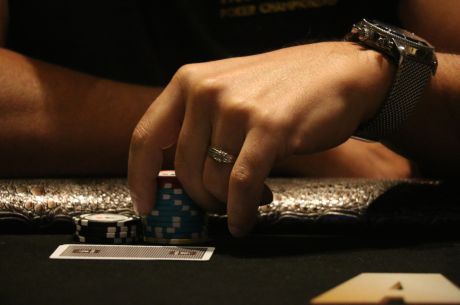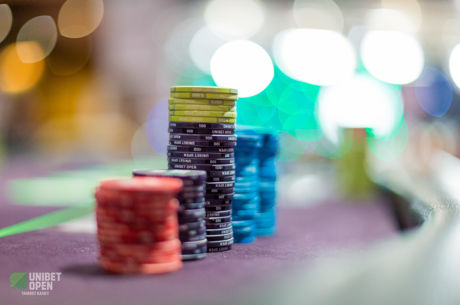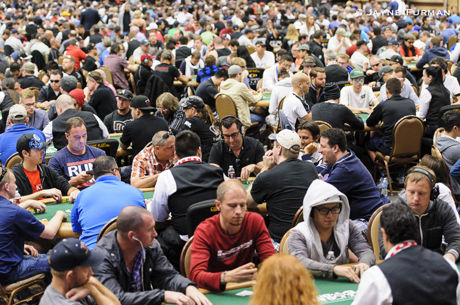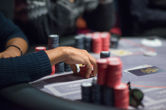Building Big Pots with Big Hands: Stack-to-Pot Ratio
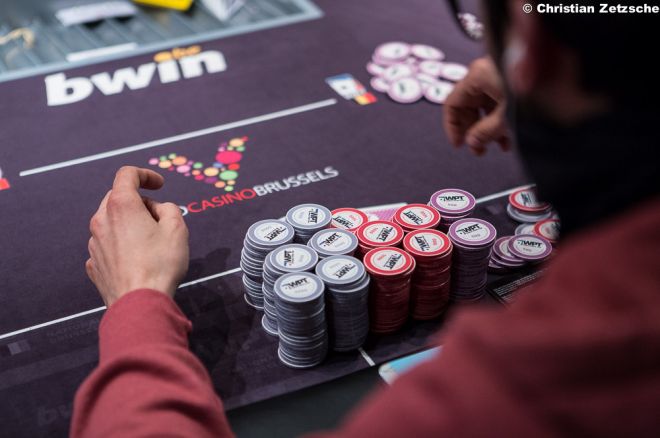
It might seem obvious �� when you have strong hands, you want to play big pots. Meanwhile when you have medium or weak hands, you don't want to be risking significant portions of your stack. For most players, the latter is easier than the former.
With bad hands, they more often than not will take passive lines, checking and/or folding, or perhaps calling if their hand has some potential for improvement. They aren't being active by betting or raising, and so they allow opponents to dictate how big the pot is going to be �� and if the pot gets bigger than they like, they get out.
There are times, of course, when players will bluff with bad hands, in which case they necessarily will be more active by betting, raising, or reraising. In those cases, they do have to decide how to size bets most effectively in order to elicit the folds they desire.
However, let's focus for now on those instances when you have a strong hand and want to build a big pot �� those hands where you want your opponents to call, not fold. How you size bets on early streets (preflop, flop) will very often have a lot to do with how big the pot is going to be on later streets (turn, river).
The "Stack-to-Pot" Ratio (SPR)
The connection between early betting and ultimate pot size eludes some players. They either bet too small early with big hands ("slow playing") and find themselves on the river trying to make a small pot into a big one, or they "fast play" their hands and bet too big too soon, scaring away opponents and only winning small pots with strong holdings.
One way to help with this problem is to try to remain aware of the "stack-to-pot" ratio throughout the hand. "SPR" is a concept that has been explored and explained by others, mostly with reference to cash games (in particular, deep-stacked cash games), although it's an idea that has relevance to tournaments as well. (An early, thorough discussion of SPR can be found in Professional No-Limit Hold'em: Volume I by Matt Flynn, Sunny Mehta, and Ed Miller.)
Let's imagine a relatively uncomplicated scenario in which you want to build a big pot with a big hand. It's a $1/$2 cash game, a player opens for $6 from late position, and you call from the small blind holding 5?5?. The flop then comes J?5?2?, giving you the set of fives you were hoping to hit.
Let's also say in this hand that for whatever reason you know unequivocally that your opponent has pocket aces or pocket kings �� that is, an overpair to this harmless-looking board �� and so almost certainly is going to call any bet you make. Even though checking and letting our opponent bet in this spot is probably a good way to play a hidden monster like our flopped set, we're going to lead with bets postflop in order to illustrate a point about SPR.
There is $14 in the pot, your opponent has $210 behind, and you have a little more. That means the "effective stacks" here are $210, since that's the most you can win. That makes the "SPR" or stack-to-pot ratio exactly 15 (or 210 divided by 14).
If you make a small bet of $5 on the flop and your opponent calls, that will bring the pot up to $24 while reducing the effective stacks to $205. The new SPR is just over 8.5.
Say you bet $10 on the turn and your opponent calls. That makes the pot $44 and the effective stacks $195. The SPR becomes a little less than 4.5.
Then on the river you bet $25 and get called again. Ultimately you win a pot of $94 (to which you contributed about half), although your opponent who had his big pocket pair cracked managed to escape relatively unharmed with $170 still in his stack.
The less-than-half-pot bets on the flop and turn kept the SPR high enough that by the river the effective stacks were still relatively big compared to the size of the pot. In such a scenario, it would be preferable to get the SPR down low enough by the river to encourage your opponent to call a much bigger bet �� perhaps even an all-in shove. Bigger bets on the flop and turn make this happen.
Go back to that flop and the $14 pot. Say you bet $12 and your opponent calls. The pot is $38, the effective stacks $198, and the SPR about 5.2. Then you bet $35 on the turn and get called again. Now the pot is $108, the effective stacks $163, and the SPR now right about 1.5.
An all-in shove on this river is still a big bet (1.5 times the pot), but not nearly as out of whack as it would be when the SPR at that point was about 4.5.
In the latter case, you made what were close to pot-sized bets on the flop and turn, which quickly got the SPR down from 15 to 1.5 before the river. Getting that SPR low by the river goes a long way towards getting a big bet called on the end in those situations when you want to get paid with a big hand.
The "13-4-1" Formula for SPR
Understanding SPR is important in all "big bet" games. It's especially good to know in pot-limit Omaha where you can't push all in on the river, but can only bet the size of the pot. In other words, in PLO if you're heads-up and you want to stack your opponent, you have to get the SPR down to 1 or below by the river.
A handy formula to remember is that if you're heads-up and the stack-to-pot ratio is 13 going to the flop, you and your opponent can each make exactly three pot-sized bets, or one per postflop street. For example...
- After the flop: pot $10, effective stacks $130 (SPR = 13)
- On flop: you bet $10, opponent calls; pot $30, effective stacks $120 (SPR = 4)
- On turn: you bet $30, opponent calls; pot $90, effective stacks $90 (SPR = 1)
In our hand example above, the SPR was about 15 going to the flop, which meant pot-sized bets would've gotten the SPR down to almost 1 by the river. Knowing that the SPR was not that much more than 13, you know, then, that making big bets close to the size of the pot on the flop and turn can better set up that river shove.
By the same token, if you get to the flop with a single opponent and the effective stack sizes already make the SPR less than 13, you know that there aren't enough chips left behind to make three pot-sized bets. And if the SPR is around 4, you know there are only two pot-sized bets left to go.
There are many other important strategic points to make about SPR, including important ones about the danger of bloating pots with vulnerable hands (e.g., top pair) when deep-stacked. In any case, in those situations when you have a big hand and want to play a big pot, pay attention to the sizing of your preflop and flop bets, remaining aware of how they affect betting options on later streets.
Want to stay atop all the latest in the poker world? If so, make sure to get PokerNews updates on your social media outlets. Follow us on Twitter and find us on both Facebook and Google+!

